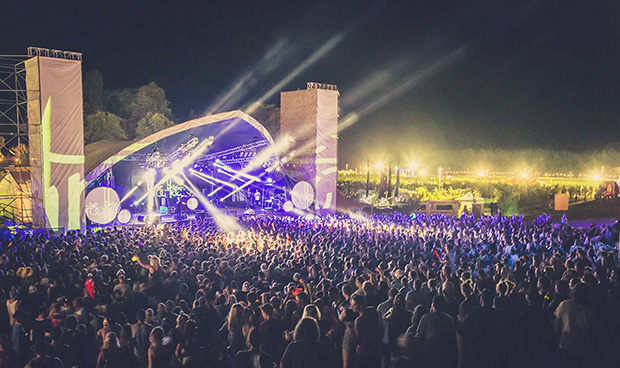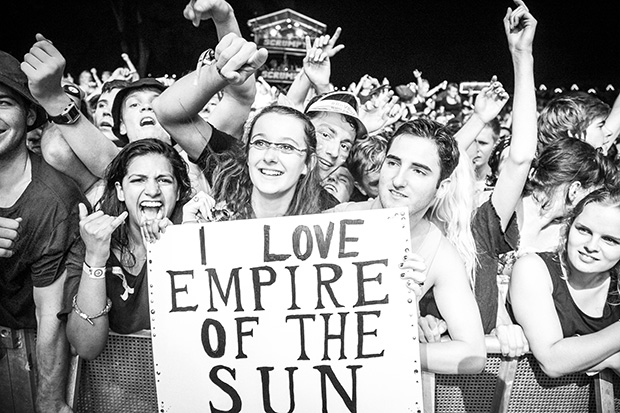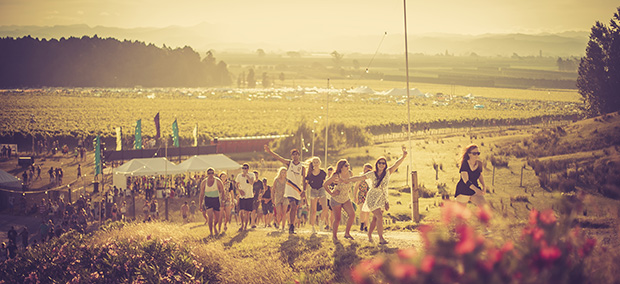Festivals offer unlimited opportunities for switched-on photographers, writes award-winning shooter Paul Hoelen. He shares some useful tips to help you return from your next big event with a memory card full of great images.
I have long been fascinated by the many and varied reasons people come together to celebrate. In all corners of the
world, and throughout history, people attend festivals to celebrate the things that are important to them: food, music, art, sport and religion, to name just a few. And while all festivals are unique, most have one thing in common: they are a rich source of photographic material – from ecstatic revellers to the high-energy performers themselves.
And while there are plenty of opportunities for great images at festivals, there are also a few challenges. With that in mind, here are some suggestions you can use to your advantage to create some memorable images.
01 SOUNDS LIKE A PLAN
Having a clear idea of the type of images you would like to get from a particular shoot will help you define your strategy and decide how you can best achieve it.
No matter what kind of images you're aiming for, good planning, research and preparation will greatly increase the likelihood of putting you in the right place, at the right time, to catch the most telling moments.
With the larger events, chances are an experienced photographer has taken photos of the same event before you.
Their photos may help you start thinking about the best locations and shooting angles, which can save you time and reduce trial and error. On another note, it may also inspire you to take a different and more creative approach – that's always encouraged!
Bigger festivals often have maps and scheduling or even online apps, so find out what you can but be prepared for last minute changes on the day. Access to certain areas can be restricted once the event starts, so plan your movements accordingly as this can catch you out.
Checking the weather forecast, scouting the area and locations for the best vantage points and viewing angles and knowing what the light will be doing when you're shooting will help greatly. Also, the more you know about the event, performers and the kind of people who attend the festival, the better the chance that you'll be able to tell their stories effectively.
If at all possible, I do a walk-through of the festival site itself beforehand to get a sense of how to get to where I want to go, what the light may be doing, and the lenses I will use in different locations. I'll often introduce myself to security and other festival staff so they know who I am and what I'm doing. Being a friendly face they've seen before can really help when the stress and pressure of the event begins.
"Usually I have a tight brief and a lot of ground to cover (six stages at this festival). If I hadn't done my research I never would have made it in time for this shot – the last song of the night," says Paul Hoelen. Canon EOS 5D Mk III, 24-105mm f4L IS lens @ 32mm, 1/13s @ f/5.6, ISO 6400, monopod.
02 ACCESS ALL AREAS
Many festivals are ticketed, and often there are significant restrictions on where, when and what you're allowed to shoot. Being aware of these is important. Of course, if you can get an 'access all areas' pass it will make a huge difference to the range of images you can get. Approach the organisers with a portfolio of your work and explain what you want to do. I sometimes offer to share some images with the organisers in exchange for their cooperation. If you are unable too get 'official' access, you can still do a lot as a festival attendee. It's all about being smart about where you go and when (front row, centre stage is a really hard place to shoot from unless you like headbanging!) and perhaps pushing your luck a little until you're told otherwise. You'd be surprised at what you can get away with if you look confident and act like you're supposed to be there.
The 'pit' (the cordoned off area in front of the stage) is a great place to shoot the crowd and performers – if you can get access. Canon EOS 5D Mk III, 24-105mm f4L IS lens @ 24mm, 1/200s @ f/4, ISO 8000.
03 ESTABLISHING SHOTS
I often shoot wide angles at the beginning of a festival to get a sense of the place and 'warm up' to the event. Aim to give your audience an overall feel for what kind of experience it is. Make connections and approach the people you want to shoot with a friendly, open manner. Sometimes it can even help to get them involved with creating the shots themselves! Look for faces that communicate the tone and emotion of the event. If I'm really pushed for time, I sometimes take the approach that, “it's better to ask forgiveness than permission” but I prefer to communicate and get the subjects' consent before photographing them. This is particularly important if there are any cultural sensitivities around photography. Use your common sense and ask questions. I have shot several Aboriginal festivals, for instance, where this has been very important!
The waft of good food, the loudest music, brightest colours and lights will likely guide you towards the focal points of the event, as most people are drawn towards those. So, while it's good to have a plan to start with, you also need to be flexible and follow your instincts to find the most interesting shots. Look for colour, action and emotional expression to add punch, story and power to your images.
"Be on the lookout for a shot that sums up the event," says Paul Hoelen. "This image has been widely used to promote this festival, I think because it encapsulates the summer feel, unique location, and celebratory energy." Canon EOS 5D Mark II, 50mm f1.4 lens, 1/5000s @ f/1.4, ISO 100.
04 BLUR AND PANORAMAS
Once I have a good set of images that 'covers the bases' and tells a reasonable story, I allow myself to slow down and get a bit more creative.
Panning with a slow shutter speed can really add a sense of movement, but it takes practice to do well. Reduce your shutter speed to 1/15s or 1/30s (depending on the lens), put your camera on centre- or sports focus, lock your elbows in and follow your subject in a smooth motion with your eye and the lens until the decisive moment arrives.
I often use a tripod or monopod and a slow shutter speed to capture the movement of the crowd and performers. With the camera supported I can also shoot a panorama if I want. Stitching multiple exposures together to create a panorama presents a broader, more expansive viewpoint. Newer iPhone's and many point-and-shoot cameras can create panoramas in camera. But with an SLR, ideally you need to match exposures, white balance and focusing in each image you want to use, follow a horizon line as much as you can and leave a third overlap between shots. Recent versions of Photoshop and PT Gui are two of the better software packages for blending stitched panoramas.
Usually I have a tight brief and a lot of ground to cover (six stages at this festival). If I hadn't done my research I never would have made it in time for this shot – the last song of the night. Canon EOS 5D Mk III, 24-105mm f4L IS lens @ 32mm, 1/13s @ f/5.6, ISO 6400, monopod.
Article first published in Australian Photography + digital, June 2014.
In part two of this feature, Paul Hoelen looks at gear options, managing contrast, shooting in low light, colour and copyright issues.











